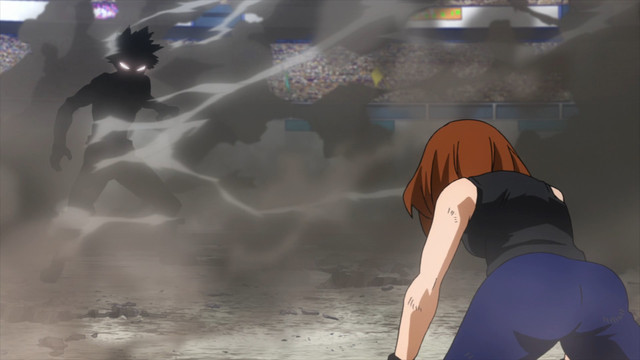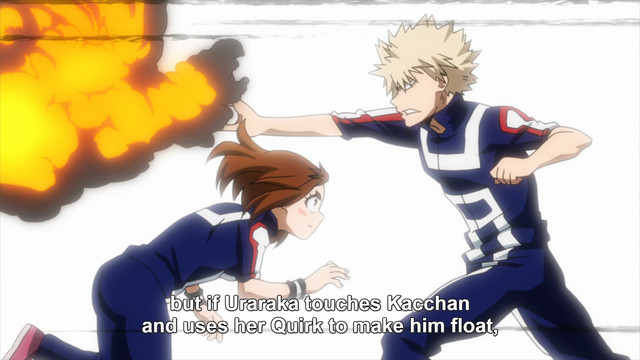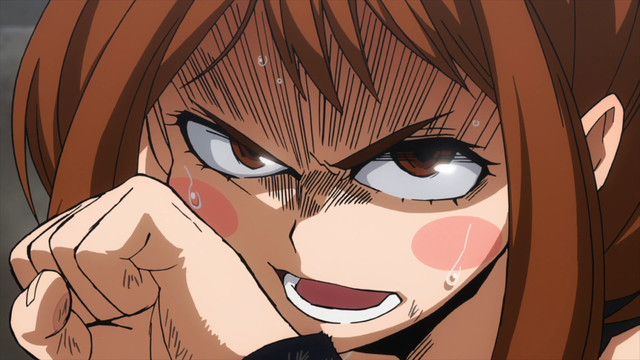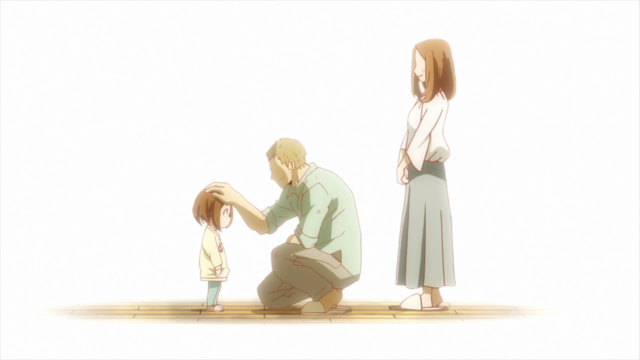Hey all, and welcome back to Why It Works! My Hero Academia burned through the Uraraka-Bakugo fight last week, with Uraraka’s clever tactics ultimately running aground on Bakugo’s clear, inarguable power. This wasn’t a particularly surprising ending. In fact, Uraraka’s fight seemed like a foregone conclusion - the audience knew it, the characters knew it, the announcers knew it. The fight ended in the way pretty much every character assumed it would, which raises a natural question. If Uraraka was going to lose this fight, and we all knew she was going to lose, how come it was still exciting?
Well, for at least a couple reasons. Today, let’s dig into exactly what this particular battle did right - and how it demonstrates that sculpting a thrilling conflict encompasses a whole lot more than just making the audience wonder what’ll happen next.

First off, this arc and even the arcs before it have worked hard to garnish this fight with an emotional narrative we’re actually invested in. Uraraka is one of My Hero Academia’s principle and most likable characters, and so even if she’s facing tough odds, the audience still wants her to win. Hard-fought victories are compelling for their own sake, but to make a hopeless battle compelling, you really need to care about either one or both of the sides involved. All of the characterization surrounding this fight was working hard to present Uraraka as someone worthy of our sympathy, someone who clearly deserves this win. That by itself is a fine platform to start from.
Secondly, the fight itself was defined by consistent, tactically sound twists and back-and-forth. Even if we’re invested in Uraraka’s story, if her strategy amounts to “keep trying to run directly at Bakugo, keep getting knocked back,” the fight wouldn’t be particularly exciting. But even though Uraraka’s tools here were limited, the show still presented her battle as a series of skillful tactical plays and strong counter-plays.

Uraraka starts off by trying to take advantage of Bakugo’s own powers, then moves on using her jacket as a decoy, and finally reveals she’s been building a meteor shower finale all the while. All throughout this sequence, there's also a clear, understandable "win condition" for Uraraka - touching Bakugo with her power, and thus mitigating his own. The interplay of Uraraka’s gimmicks and Bakugo’s responses meant this fight’s odds and twists were parseable in a far more grounded and compelling way than “he has X strength, she has Y strength” ever could be. The imbalanced powers of My Hero Academia actually facilitate the appeal of its fight scenes, and this fight was no exception.
Third up, My Hero Academia also worked to craft a small narrative solely within the limits of this one fight. While Uraraka’s role in this fight was playing out a series of premeditated strategies, Bakugo mostly just spent the fight reacting - but even within his reactions, there was a clear story being told. Bakugo opens the fight by referring to Uraraka as “round face gravity girl,” a reflection of the established fact that he only remembers the names of people he deems important. But by the midway point, Eraserhead has to point out that Bakugo’s playing defensively purely because he’s cautious of making a mistake against a dangerous opponent. And by the end, Uraraka has earned her own name in Bakugo’s eyes. Even if Bakugo was cast as the “villain” in this battle, his growth is both smart characterization and a great way to underline Uraraka’s own growth.

Fourth, and perhaps most obviously, Uraraka’s battle is livened by the most obvious of strengths: great, fluid animation. While the storyboards lean heavily on the (already excellent) manga panels, the anime’s pacing and visual beauty greatly enhance the impact of the battle. Concepts like the effectiveness of Uraraka’s smokescreens and the absurd impact of Bakugo's quirk are made viscerally real through terrific effects animation, conveying the concept of Uraraka being physically overwhelmed in the most clear possible way. Few shows can really get away with pure animation candy to sell their fight scenes, but My Hero Academia marshals its limited resources to great effect, and it certainly helps here.
Finally, after all the fighting is done, Uraraka’s call to her father tied the whole affair together. Grounded dialogue focused on the practical consequences of this match lent a sense of weight to Uraraka's defeat, right before her father consoled her with just the words she needed to hear. This entire arc has focused heavily on the relationships between parents and children, and how we build our dreams and identities in their shadows, for better or for worse. Uraraka’s tearful talk with her dad was a key moment in both an individual character sense and in this arc’s larger argument, making her defeat feel meaningful in an emotional way even if we really wanted her to win.

We could easily get even more nitty-gritty in breaking down this latest episode, but I’d say that’s a fine start. All of these individual focuses came together wonderfully for Uraraka’s battle, resulting in an unwinnable fight that managed to be thrilling in spite of itself. I’m excited for whatever the next battles bring!
-----
Nick Creamer has been writing about cartoons for too many years now, and is always ready to cry about Madoka. You can find more of his work at his blog Wrong Every Time, or follow him on Twitter.
No comments:
Post a Comment